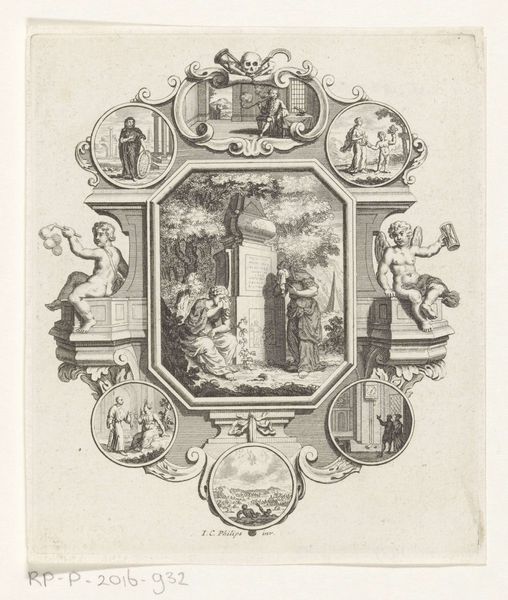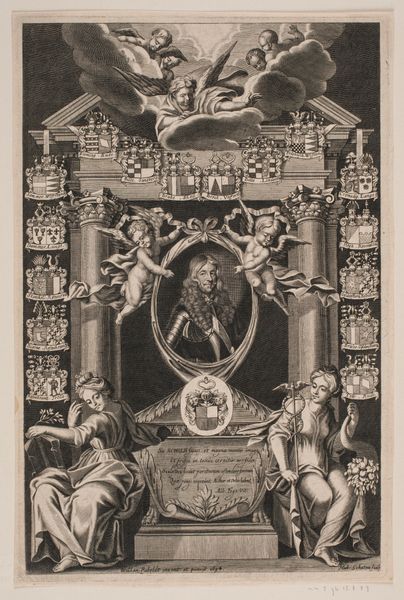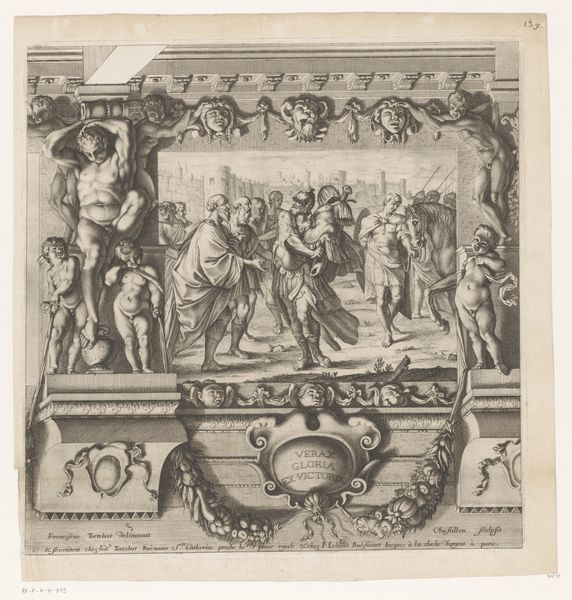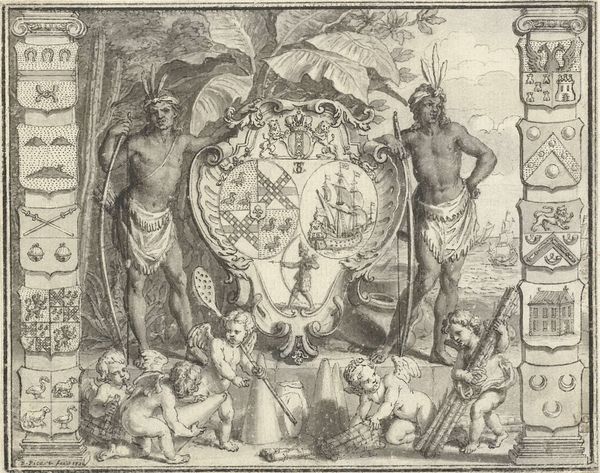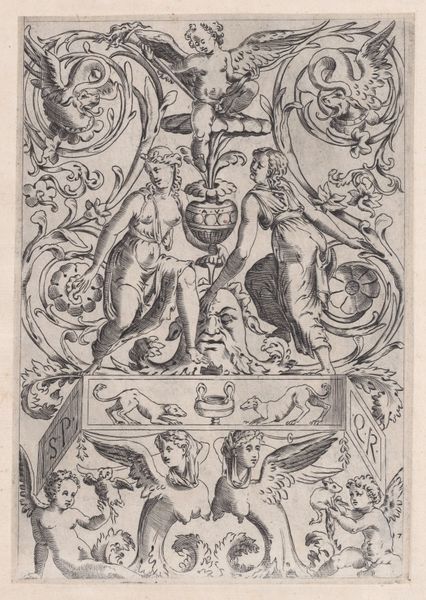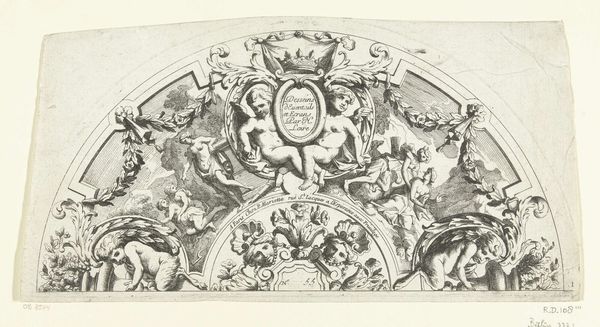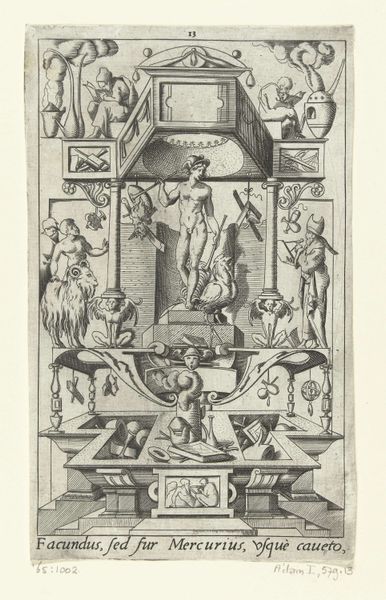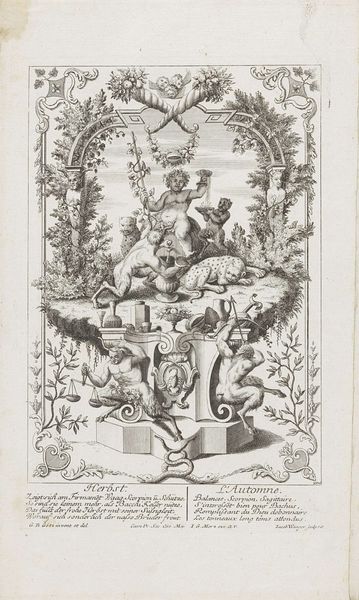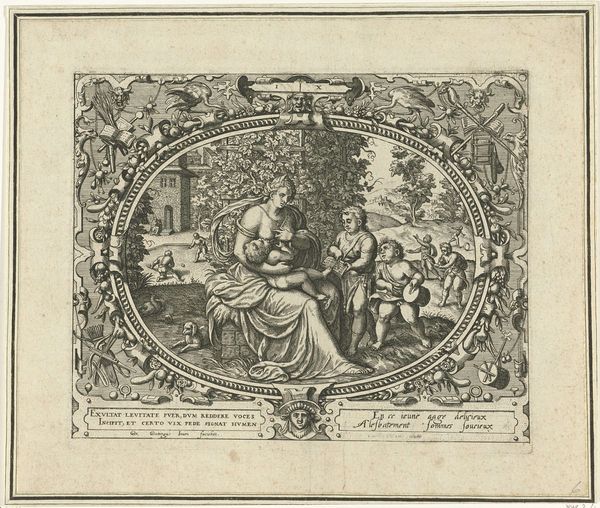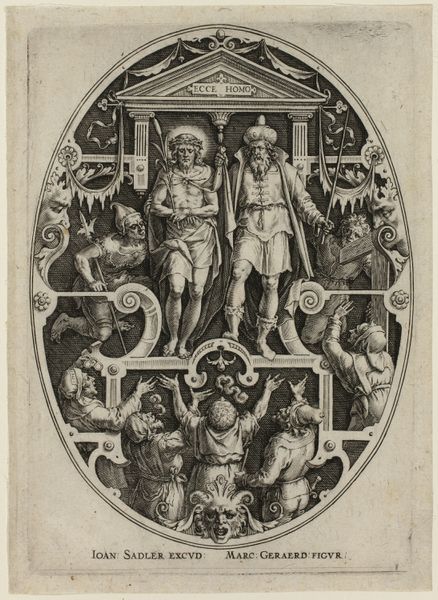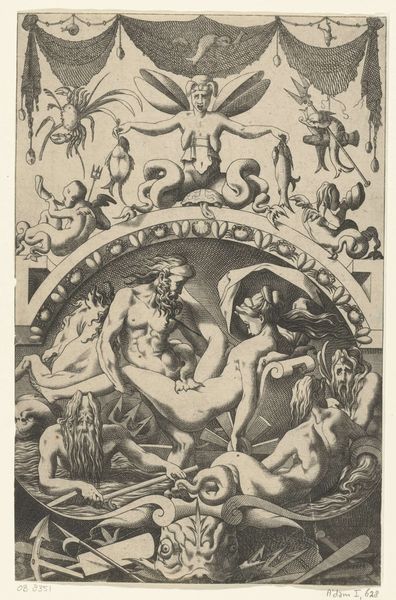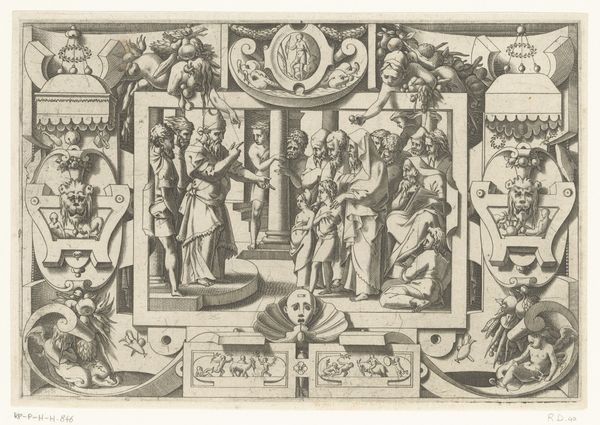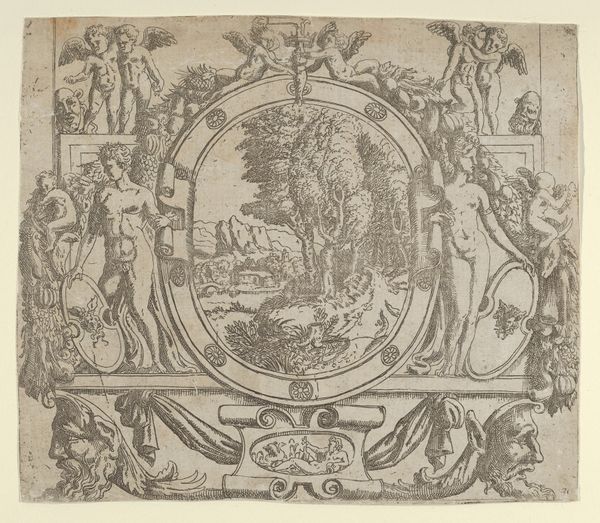
drawing, graphic-art, print, engraving
#
portrait
#
drawing
#
graphic-art
#
quirky sketch
#
allegory
#
baroque
# print
#
pen sketch
#
pencil sketch
#
figuration
#
form
#
personal sketchbook
#
sketchwork
#
pen-ink sketch
#
line
#
pen work
#
sketchbook drawing
#
history-painting
#
storyboard and sketchbook work
#
sketchbook art
#
engraving
#
realism
Dimensions: height 107 mm, width 130 mm
Copyright: Rijks Museum: Open Domain
Curator: At first glance, this engraving is surprisingly…busy. Editor: Indeed! We're looking at "Wapenschild van de Sociëteit van Suriname," or "Coat of Arms of the Society of Suriname," dating back to 1720. It’s a print by Bernard Picart, currently housed in the Rijksmuseum. The material is presented primarily with engraving as well as drawing. Curator: "Busy" feels like an understatement. Shields piled on shields, those imposing Indigenous figures, and mischievous putti scrambling around – what a spectacle. The central shield depicts ships sailing off, and then various plants. What exactly were these emblems trying to convey? Editor: Precisely, that complexity is where its intrigue lies. Those shields represent the various directors of the Society, a powerful entity that governed the Dutch colony of Suriname. The ships evoke the trade routes, while the figure and plants represent, of course, Suriname. Look closer at those Indigenous figures supporting the central coat of arms, they're potent symbols of the land and its inhabitants. The whole piece works as allegory of colonial power. Curator: They certainly exude a kind of…melancholic strength. You see the clear connection between land and power embedded in them. The almost carelessly drawn putti playing around on the bottom appear as counterweights adding to this complex symbolic weight of land exploitation and ownership. Editor: Absolutely. The composition leads us from the immediate to the more distant. The materiality adds to this. Observe Picart's masterful use of line – crisp, precise, and incredibly detailed. He uses shading techniques to almost make these subjects feel as if they're moving. Notice that each element occupies its designated space and adds to the layered symbolism. Curator: There's a striking contrast in textures and styles, isn't there? Between the rigid heraldry, those realistically rendered indigenous figures, and the frolicking cherubs. Editor: That juxtaposition, for me, embodies the cultural tensions inherent in colonization. It is a story being told with its medium as much as it is with its symbols, Curator: It’s true. Looking closer, I see those tensions mirrored in the composition and the layering of symbols and styles. Picart's choices reveal a perspective beyond pure propaganda. It adds more depth than a commissioned heraldic representation would imply. Editor: Yes, and understanding the structural relations illuminates just how potent and enduring these visual symbols of cultural and economic dominance continue to be.
Comments
No comments
Be the first to comment and join the conversation on the ultimate creative platform.
